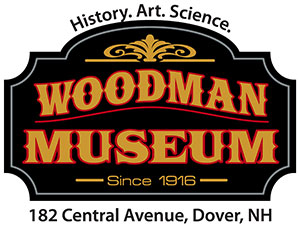18+ Dungeons and Dragons League
Woodman Museum 182 Central Ave, Dover, NH, United StatesCome let your imagination run wild every Tuesday night at the Woodman’s Dungeons and Dragons League. 18+. $3 weekly buy-in.

Come let your imagination run wild every Tuesday night at the Woodman’s Dungeons and Dragons League. 18+. $3 weekly buy-in.
Come let your imagination run wild every Tuesday night at the Woodman’s Dungeons and Dragons League. 18+. $3 weekly buy-in.
Come let your imagination run wild every Tuesday night at the Woodman’s Dungeons and Dragons League. 18+. $3 weekly buy-in.
Come let your imagination run wild every Tuesday night at the Woodman’s Dungeons and Dragons League. 18+. $3 weekly buy-in.
Come let your imagination run wild every Tuesday night at the Woodman’s Dungeons and Dragons League. 18+. $3 weekly buy-in.
Come let your imagination run wild every Tuesday night at the Woodman’s Dungeons and Dragons League. 18+. $3 weekly buy-in.
Come let your imagination run wild every Tuesday night at the Woodman’s Dungeons and Dragons League. 18+. $3 weekly buy-in.
Come let your imagination run wild every Tuesday night at the Woodman’s Dungeons and Dragons League. 18+. $3 weekly buy-in.
Born in nearby Rochester NH, John Parker Hale is best known as the first avowed Abolitionist Senator in the United States. It is an odd irony that, in the two decades Hale was in the Senate, Dover profited from the manufacture of cotton products that were produced by Southern slave labor. Living in William’s own house, Hale took a solid stand against slavery - a position that earned him enmity from Southern leaders, even a death threat on the Senate floor from a colleague. It also earned Hale a statue in 1892 on the lawn of the state capitol in Concord, NH, where his figure now stands with Daniel Webster, President Franklin Pierce and John Stark.
Today, the collections throughout two of the three floors of the Hale House are arranged into galleries displaying Hale Family artifacts, local and regional history, New England period furniture, fine and decorative arts and more.
The younger Charles Woodman inherited the estate from his mother. A successful financier and manager of the Strafford Savings Bank, he resided here throughout his life. He married twice: his first wife, Hannah (Coffin) Woodman, died in 1854 and in 1856 he married Annie (Allen) Woodman. When she died in January 1915, Annie Woodman left the sum of $100,000 “for the establishment …of an institution for the promotion of education in science and art and the increase and dissemination of general and especially historical knowledge.” The trustees of the estate acquired the Woodman house and the adjoining Hale House, which by chance came on the market that same year. The renovation of the interior was directed by local architect J. Edward Richardson, and the Institute opened in July, 1916.
Today, the collections throughout the three floors of the Woodman House are arranged into galleries displaying natural science (mounted specimens, rocks and minerals, fossils, seashells), Native American culture, military history, “childhood” history (schools, Scouting, toys, games and dolls), seasonal themed exhibits and more.
In 1915, Col. Daniel Hall (the founding Head Trustee of the Woodman Museum) had an interview with Mrs. Rounds and broached the matter of having the garrison and its contents removed to the grounds of the Woodman Museum. The proposition proved to be acceptable to her; in due time she made a formal gift of the Damm garrison to the Museum. Daniel Chesley was entrusted with the task of removing the house to its new home; it took him one week, using wooden rollers and a horse, to move the garrison to the grounds. Local architect J. Edward Richardson directed the construction of the protective outer “colonnade” building that surronds and protects the garrison currently.
Today, the collections throughout the two floors of the William Damm Garrison House are arranged into galleries displaying local Colonial and Early American history.
Today, the first floor of the Keefe House (the Thom Hindle Gallery) features rotating artist and artisan exhibitions throughout the year. The second floor of the Keefe House (the Robert Whitehouse Library) serves as administrative offices and a climate controlled archive. The attached two story Carriage Barn houses local and regional transportation, trades, farm, and household collections.